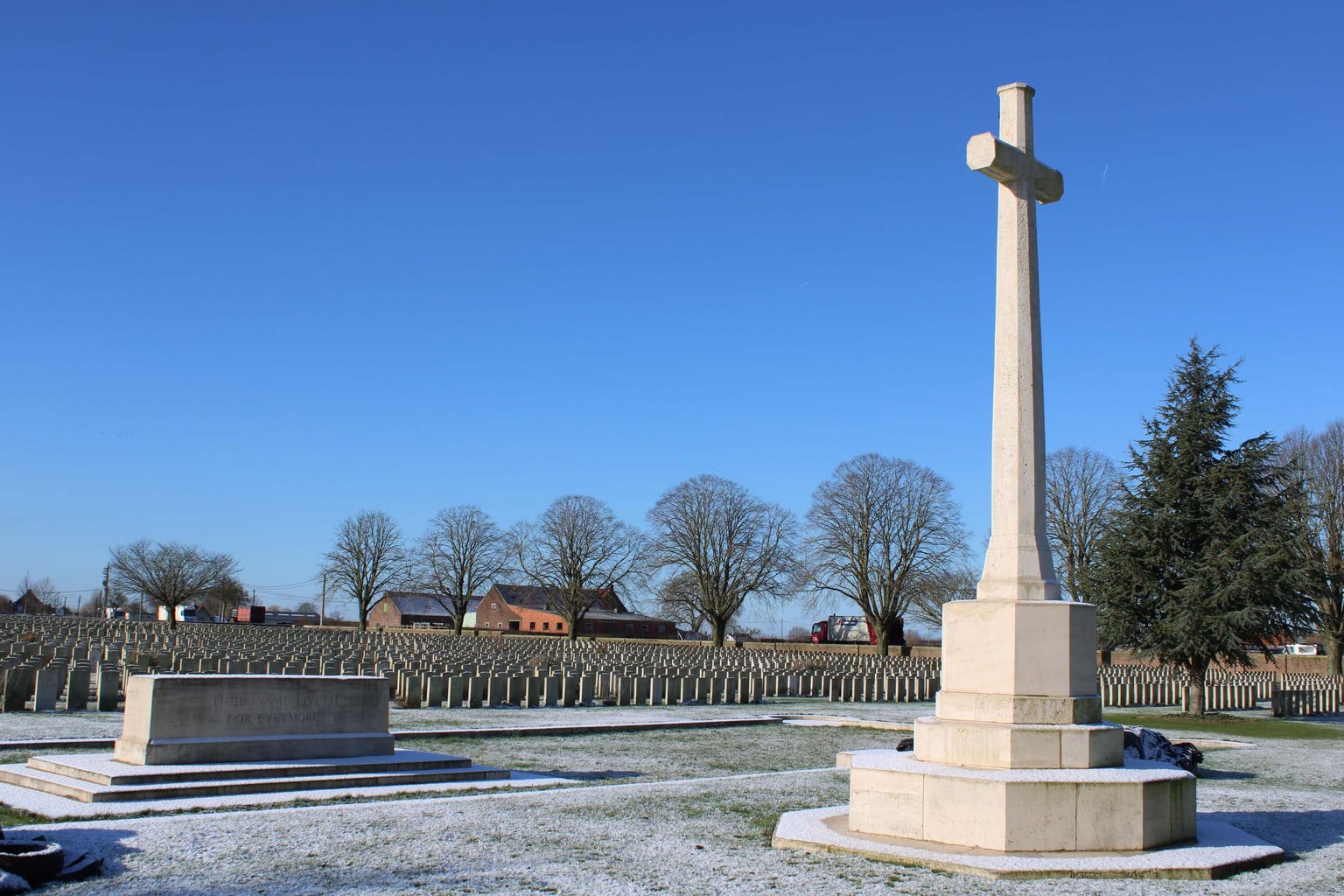The Commonwealth War Graves Commission’s map book of cemeteries in Northern France and Belgium lists hundreds of sites in that area alone. They range in size from tiny battlefield cemeteries to large“collective” ones with burials from multiple battles and relocations from other sites.
Around the towns of Vimy, Arras, Amiens and Cambrai, where Canadian troops were victorious in several key WW1 battles, the extraordinarily high cost of these victories is evident in the many military cemeteries that dot the landscape.
Canadian burials from this war can be found in “Canadian” cemeteries, where virtually every headstone shows the maple leaf, as well as in “Commonwealth” and “British” military cemeteries, where the maple leaf can be found among the headstones of the British and other allied soldiers at whose sides they fought and died.

